Special Report
21 Things That Have Changed for the Worse Since 2010
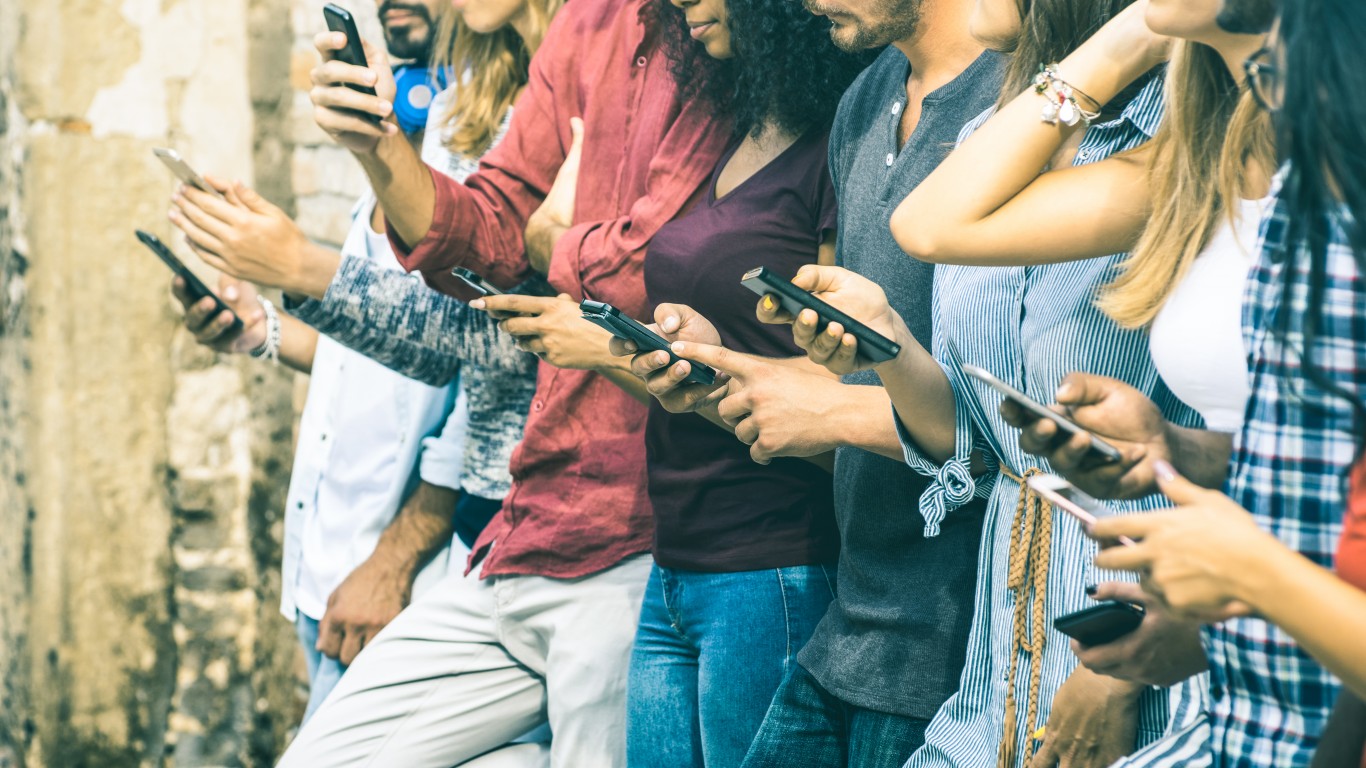
Published:
Last Updated:

A decade is a reasonable amount of time to recognize the difference between a trend and a fad, which is basically a short-lived trend. Since 2010, societies and governments have repeatedly made some bad decisions, creating negative trends and changing certain aspects of our lives for the worse.
24/7 Tempo reviewed dozens of articles from multiple online sources on various topics to compile a list of 20 things that have taken a turn for the worse in the United States since 2010.
Air pollution is killing people; student loan debt is a deepening crisis; job burnout is now officially a medical diagnosis recognized by the World Health Organization because too many people simply work too much. These are just a few examples of things people can try to address and work on in the coming year.
The 2010s will go down in history as a decade of many newsworthy stories, many of which were not good news. But for a more positive perspective, take a look at the 15 best health news over the last decade.
Click here to see the 21 things that have changed for the worse since 2010
To compile a list of 20 things that have taken a turn for the worse in the United States over the last decade, 24/7 Tempo reviewed dozens of articles from multiple online sources on various topics to determine negative trends. Some of the things on the list have continuously gotten worse since 2010 and some more recently. We excluded issues that can be considered subjective, such as politics and lifestyle choices. We also used editorial discretion and limited the items to one or two per subject.

Social media addiction
Social media is addictive, according to a Harvard study which showed that self-disclosure on platforms like Facebook fires up the same reward areas of the brain that taking an addictive substance does. Psychologists estimate that up to 10% of Americans meet the criteria for social media addiction, which is defined as being excessively concerned about social media, having an uncontrollable urge to use it, and spending so much time on it that other parts of one’s life are affected.
Social media use has increased so much that Missouri Republican senator Josh Hawley introduced a bill to cap how much time Americans spend on Facebook to 30 minutes a day. The average smartphone user checks Facebook 14 times a day. And that’s just one social media platform. Between Facebook, Instagram, Pinterest, and various messaging apps, people are glued to their phones. In fact, people are expected to spend more time online watching videos, shopping, and browsing through Facebook than watching TV this year.
[in-text-ad]
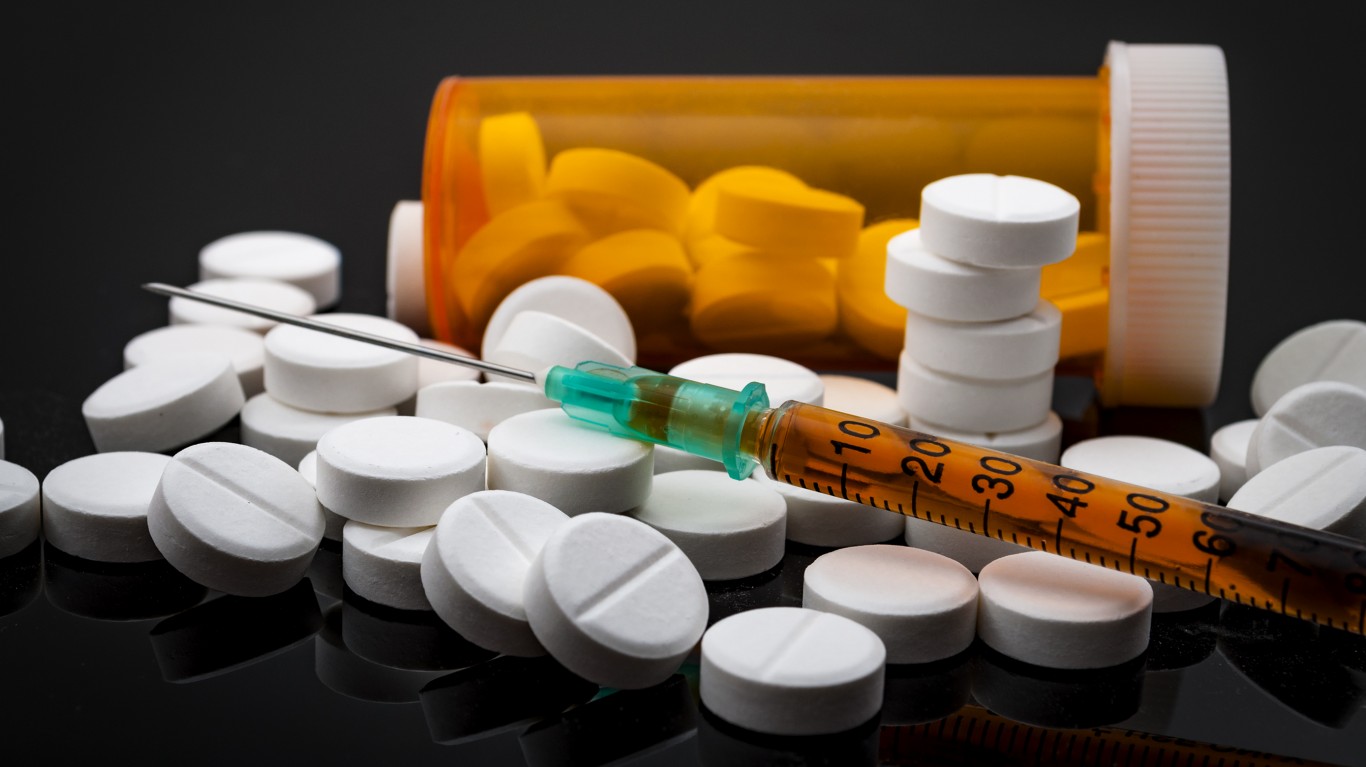
Opioid epidemic
More than 70,000 Americans died from overdosing on illicit drugs and prescription opioids in 2017. This is a two-fold increase in a decade. Overdoses are now a leading cause of injury-related death in the United States, according to the Centers for Disease Control and Prevention. And according to the National Institutes of Health, every day over 130 people in the United States die from opioid overdose, including pain medication, heroin, and synthetic opioids such as fentanyl.
Efforts have been made to fight the crisis. These include measures to restrict opioid overprescribing. Also, in 2017, President Donald Trump declared the opioid crisis, which is the worst drug crisis in U.S. history, a national public health emergency. This designation made it easier to access federal funds to fight the epidemic.
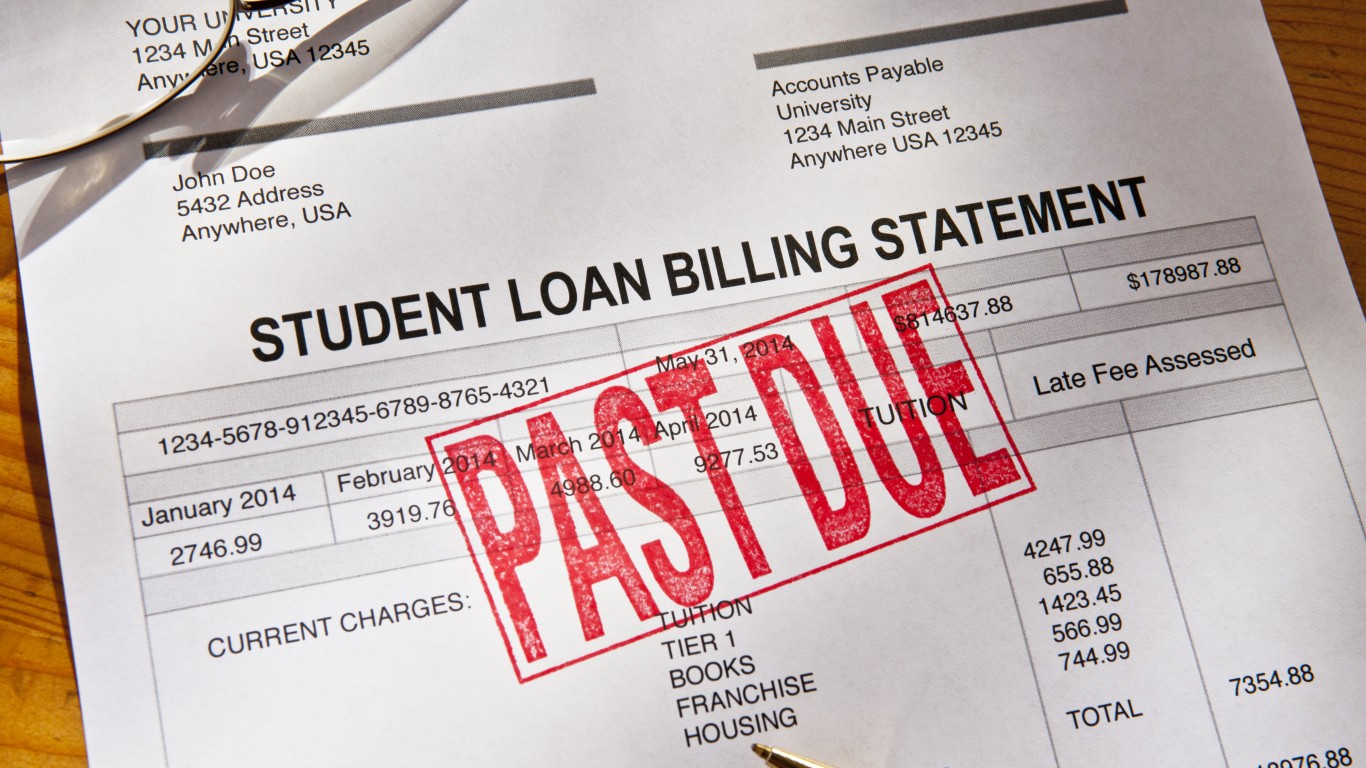
Student loan crisis
Student loan debt has been getting worse and worse over the years. It reached an all-time high of $1.4 trillion in the first quarter of 2019, according to Experian, a credit reporting company. This is an increase of 116% in 10 years. (The only larger credit debt for Americans is mortgage debt.) The average graduate leaves school owing just over $35,000.
The student loan crisis is likely to be a major topic in 2020 as presidential candidates offer various approaches to tackle it, including canceling student debt and making public college free. The Treasury Department recommended teaching students and borrowers more about finances by requiring them to take financial literacy courses.
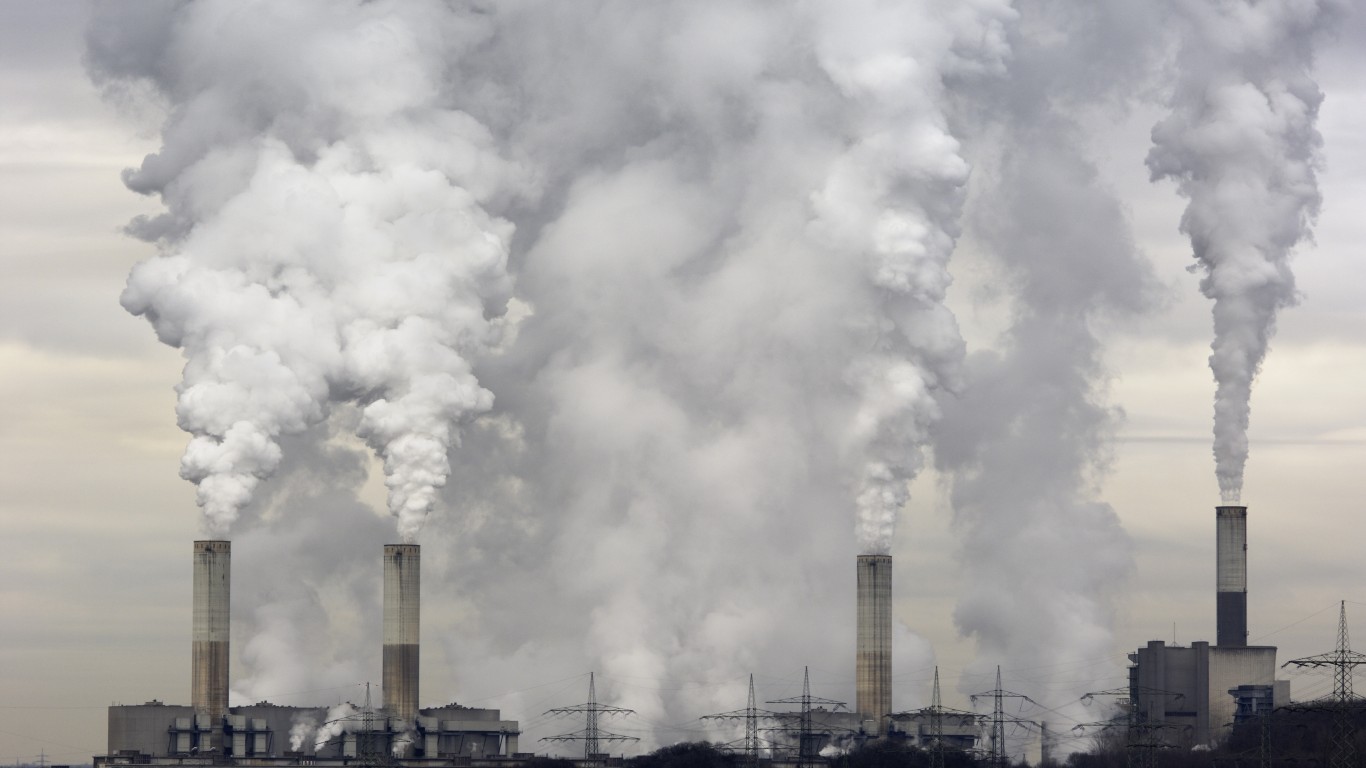
Air pollution
Air pollution is largely caused by the burning of fossil fuels like coal and petroleum, and although for a while it seemed like air quality was improving in the United States, since 2016 it has worsened again. Researchers from the University of Chicago call air pollution the “world’s top killer” because it cuts global life expectancy by an average of 1.8 years per person, according to the university’s Quality of Life Index. In the United States alone, nearly 10,000 premature deaths since 2016 have been attributed to an increase in air pollution, according to the National Bureau of Economic Research.
More than 141 million Americans live in places with unhealthy levels of air pollution, according to the American Lung Association’s 2019 State of the Air report. This is significantly more than the 134 million people reported in 2018.
[in-text-ad-2]

Work culture
Burnout is a well-known phenomenon. First described in 1974 by psychologist Herbert Freudenberger, it is the feeling of chronic work-related stress that has not been managed. But job burnout has gotten so bad that it was officially classified as a medical diagnosis by the World Health Organization in May 2019.
Lack of sleep is just one common symptom of burnout. Others include exhaustion, lack of motivation, forgetfulness, and pessimism. A recent Gallup study found five main factors that contribute to job-related burnout: unfair treatment, unmanageable workload, lack of role clarity, no support from managers, and unreasonable time pressure.

Traffic
People who drive on a regular basis spend 54 hours a year sitting in traffic, which amounts to more than $1,000 in wasted time and fuel, according to a report from the Texas A&M Transportation Institute. The yearly delay per commuter in 2012 was 47 hours. Commuters in the 15 most-congested cities spent an average of 83 hours stuck in traffic in 2017.
One big contributor to the traffic problem is employment growth. A study, which Uber and Lyft sponsored, showed that the ridesharing companies make traffic worse. Another possible factor is self-driving cars, according to a report by the World Economic Forum. Travel time is likely to increase as people will use autonomous cars for short trips, adding more cars to the roads, and making regular commutes even longer.
[in-text-ad]
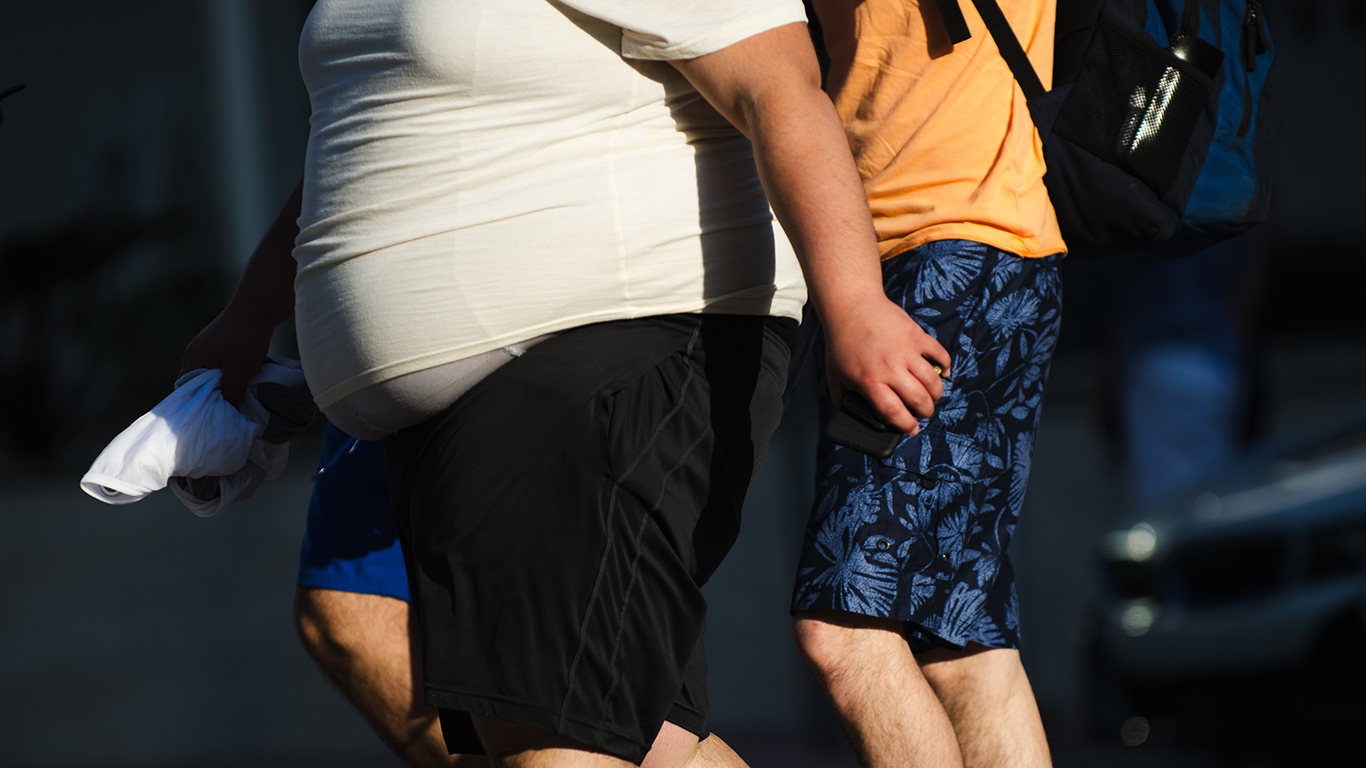
Obesity rates
America’s overweight and obesity problem is undeniable, and people are still not losing any weight. Obesity rates across all age groups have been increasing for decades and health experts are calling the problem an epidemic.
Youth obesity grew from 16.8% to 18.5%, and the adult obesity rate increased
from 33.7% to 39.6% between 2008 and 2016, according to the National Health and Nutrition Examination Survey. Across all age groups in 2017, 65.4% of people were overweight or obese, according to an annual analysis of CDC data by the Kaiser Family Foundation.

Life expectancy
Life expectancy in the United States was in a slow but steady decline between 2014 and 2017, the longest consecutive decline since 1918, according to the CDC’s National Center for Health Statistics. A person born in 2017 is expected to live 78.6 years, down from 78.7 in 2016, and from 78.9 in 2014.
One major reason why a baby born today is expected to live less is an increase in deaths from specific causes such as drug overdoses (up by 72% from 2014 to 2015) and suicides (up by 33% since 1999) among young and middle-aged adults of all racial groups.
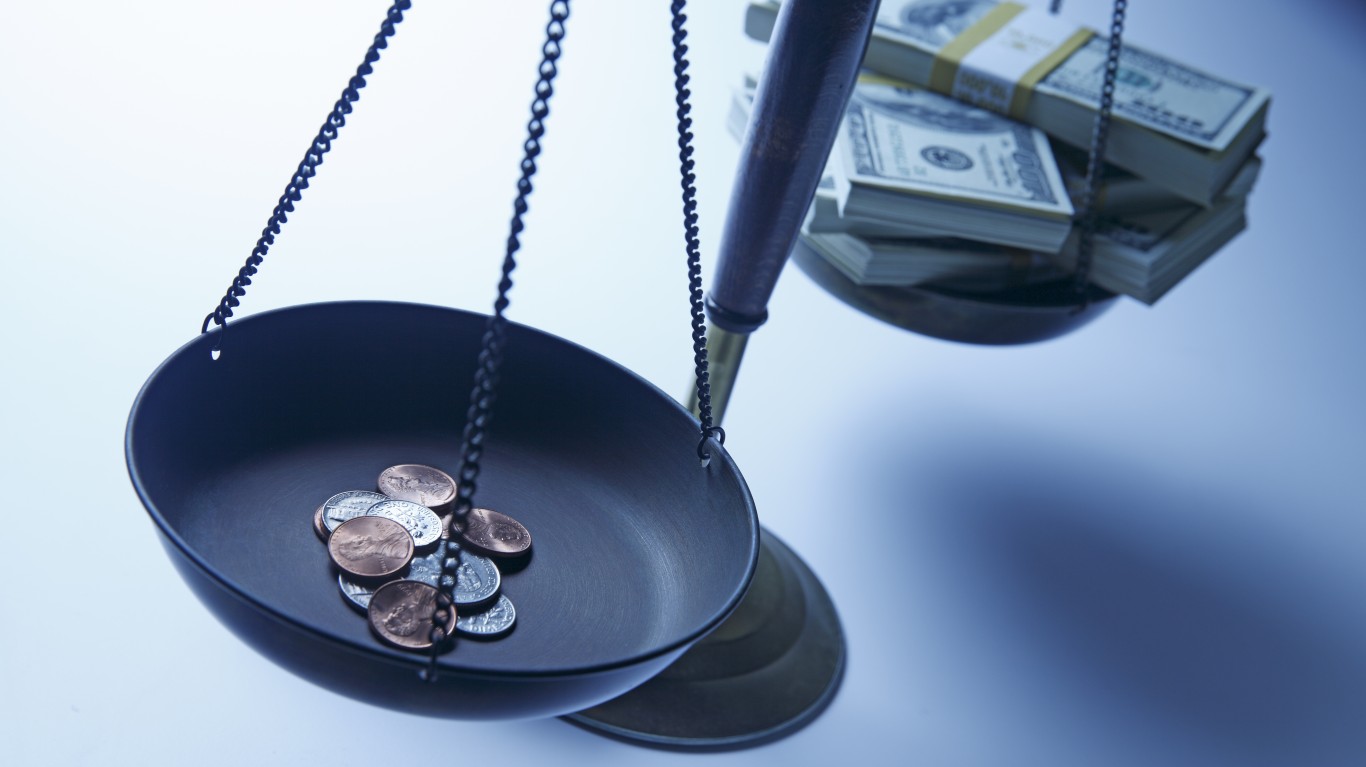
Income inequality
An analysis by the Economic Policy Institute found that between 2000 and 2018, the top earners’ income grew over three times as fast as wages at the median.
The gap was “significantly higher” in 2018 than in 2017, according to the latest American Community Survey report. In this period, the income gap grew wider in nine states: Alabama, Arkansas, California, Kansas, Nebraska, New Hampshire, New Mexico, Texas, and Virginia. Overall, according to the Census Bureau, the gap between the wealthy and the impoverished is the largest in half a century.
[in-text-ad-2]
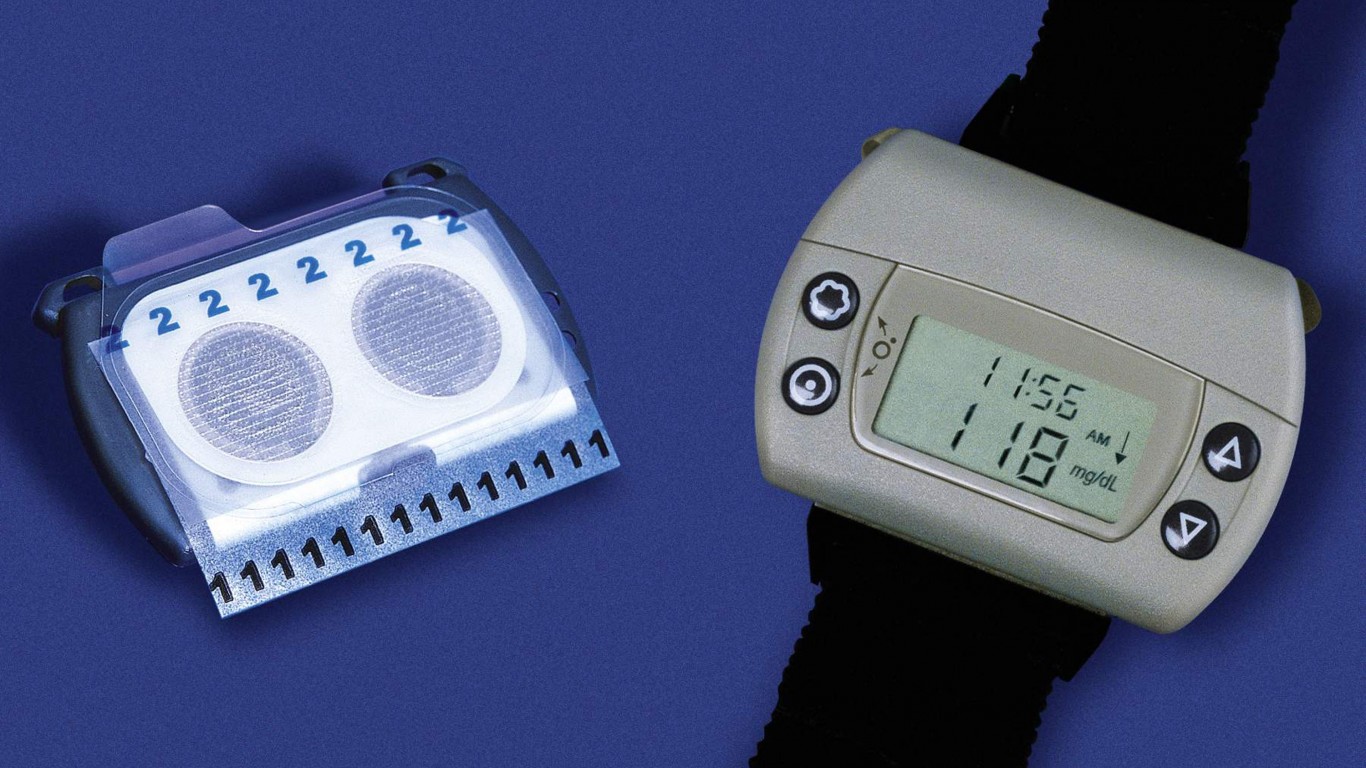
Diabetes rates
As of 2015, 30.3 million Americans, or just over 9% of the population, were living with diabetes, up from 21.1 million in 2010, according to the Centers for Disease Control and Prevention. The chronic condition is the seventh leading cause of death in the U.S., killing more than 83,000 people in 2017.
In 2017, 84 million had prediabetes, or higher than normal blood sugar levels, which will turn into diabetes if left untreated. Some of the more common warning signs of diabetes include increased thirst, numbness in hands and feet, slow-healing cuts and bruises, and blurry vision.

Box office revenue
Over the last few years, Hollywood has been producing a lot of sequels, as well as spinoffs and remakes of beloved movies. But it seems that people are not huge fans. Even though the annual average ticket price increased from $7.89 in 2010 to $9.11 in 2018, box office revenue has been declining.
The average amount of money made by each movie released in 2010 was over $17.5 million; in 2019, that figure was just over $12.7 million (and that is including the highest grossing movie in history — “Avengers: Endgame.”)
[in-text-ad]

Global warming
Largely as a result of greenhouse gases from human activities, the average temperature for the period between 2010 and 2019 is most likely the highest on record (we’ll know for sure when the year is over), according to the World Meteorological Organization. Several devastating events marked the last decade, including hurricanes like Sandy and Maria. 2019 is on its way to be the second or third warmest year on record.
The United States, the biggest greenhouse gas emitter in the world, announced in 2017 that it would withdraw from the Paris Agreement, which aims to reduce greenhouse gas emissions. After several huge heat-fueled wildfires over the last two years and deadly hurricanes, polls now show that increasingly more Americans worry about global warming.

Happiness
Happiness may frequently change, depending on numerous factors, including social, financial, and health status. Overall life satisfaction in the United States fell by 6% between 2007 and 2018, according to the latest World Happiness Report. And according to the 2019 Gallup Well-Being Index, which is based on responses from more than 115,000 U.S. adults aged 18 and older, happiness in the United States has been in steady decline since 2016. In 2017, 21 states showed declines in well-being and no state improved.
The factors that played the biggest role in this year’s ranking were relationship related. Depression rates are up and so is daily stress and worry. The kind of jobs people do may also be a factor. While employment rates are up, job quality is getting worse. There are more jobs, but many of them are low quality, according to the U.S. Private Sector Job Quality Index. As much as 44% of all workers are low-wage workers.

Privacy
There is no such thing as a free lunch. You don’t pay actual money to create a social media account, but you pay with your privacy. It’s no secret that companies are profiting from every bit of information a person chooses to share online. Personal details from professional history to how many friends one has are being collected, analyzed, and sold. You may think you’re just sharing with friends but, in fact, you’re sharing with data miners.
Data privacy is shaping up to be one of the most important topics of the next year, if not the next decade. The Cambridge Analytica scandal revealed that social media giants such as Facebook misuse data.
[in-text-ad-2]

Media and news source
Social media platforms have insinuated themselves into politics, the workplace, and everyday life — and they have practically replaced traditional media organizations as publishers. About 68% of Americans get their news from social media, especially Facebook, YouTube, and Twitter. With the potential to reach millions of people in a matter of minutes, Facebook and Twitter have fundamentally changed political discourse, especially after the impact they had on the 2016 presidential election.
The problem is that people’s news sources are limited and biased. One’s Twitter feed will only show tweets by people or organizations a person follows. Facebook changed its algorithm so people will see more posts from family and friends in their feed rather than businesses or media. What’s more, according to a study, lies spread faster on social media than truths and reach more people.

Public infrastructure
People spend hours of their lives sitting in traffic every year, costing them thousands of dollars in wasted time and fuel. But the roads in the country are not just jammed, they are in poor condition. Traffic congestion has increased in almost all of the country’s 100 largest metro areas since 2008.
More traffic usually means more frequent repairs. But maintenance costs money, and America’s roads have been underfunded for years. The federal government funds construction of highways, but fixing the country’s highways and bridges will cost an additional $836 billion, according to ACE’s 2017 American Infrastructure Report Card.
[in-text-ad]

Mania for selfies
Selfies are among the most popular types of pictures ever. The word “selfie” was even named the word of the year in 2013 by Oxford dictionaries. Taking a self-portrait picture with cool backgrounds may be fun in many cases but it has also become increasingly dangerous.
Selfie-related deaths are a growing problem, according to a 2018 study published in the Journal of Family Medicine and Primary Care. Almost 260 people died while trying to take a selfie between October 2011 and November 2017. The highest number of not just fatalities but accidents has been reported in India followed by Russia, the United States, and Pakistan. Some of the most common causes are drowning and falling.
“No selfie zones” have been established in some places, such as Mumbai, India, in order to prevent tourist deaths.

Robocalls
When your phone rings and you don’t recognize the number, do you pick up? Even if you did in the past, chances are you don’t anymore. Odds are high it’s a robocall. And that’s why about 70% of Americans just refuse to answer the phone. It has become a device people distrust, which ultimately results in disrupted communications that costs time and money, according to Consumer Reports.
Robocalls have grown out of control. About 5 billion of them were placed in November 2019 alone, or more than 160 million a day. That means a person in the United States is getting an average of 15.3 calls a day, according to YouMail, a tracking company.

Air travel
While air travel is still the fastest way to get people from one city to another, planes are slower than they used to be. Cruising speeds for commercial airliners today range between about 480 and 510 knots, according to the MIT School of Engineering. In the 1960s, they used to be 525 knots. Blame it on fuel economy. Going faster means more fuel, which costs more.
Planes also seem to be shrinking as legroom has all but vanished. Airlines have been trying to cut costs by squeezing in as many people as they can in one flight, at the expense of our knees and backs, resulting in less room between seats. You can still pick a seat with more legroom, but it’ll cost extra.
[in-text-ad-2]
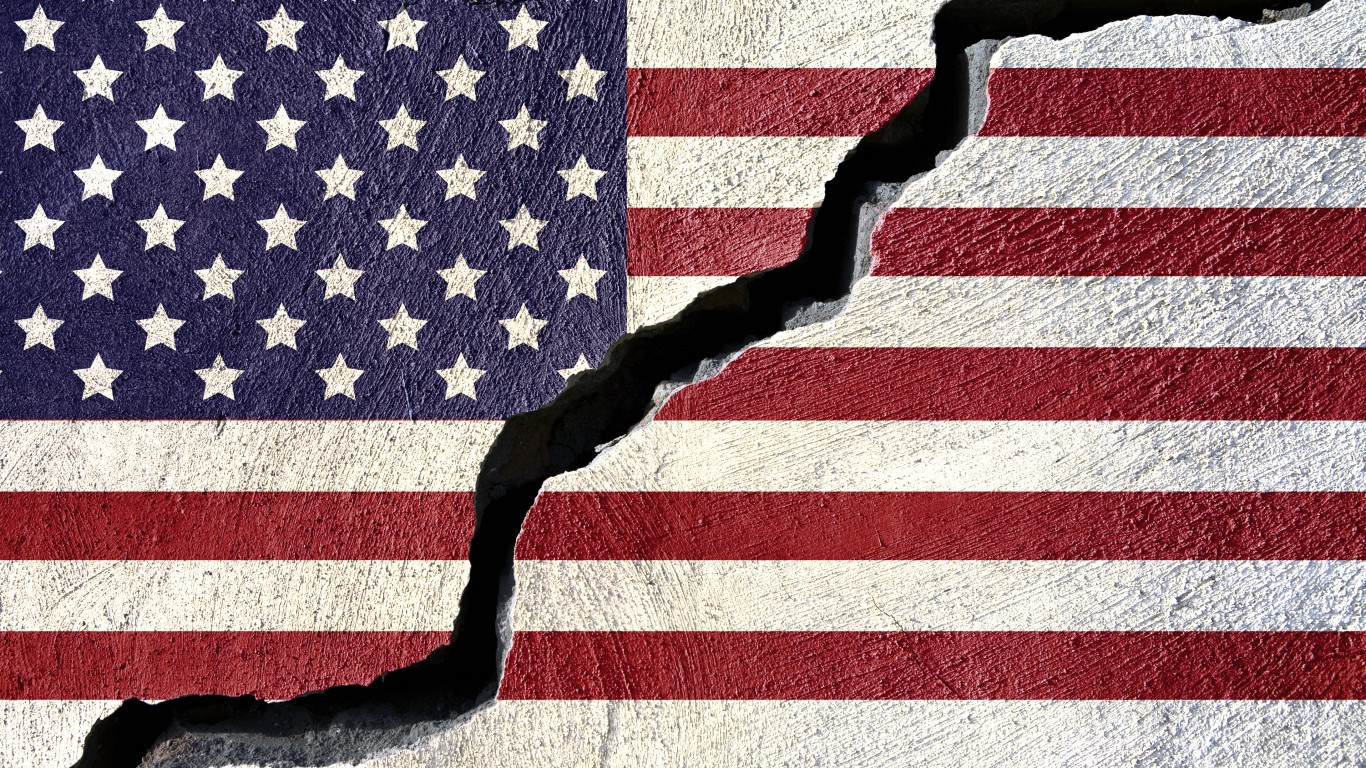
Political division
News about the deep economic and social divisions in American society has been common since the presidential election in 2016. But some research suggests the trend started shortly after Barack Obama was first elected president in 2008. The 2018 state elections revealed huge political divisions along geographic lines, as all but one state legislature became controlled by one party. This had not happened since 1914, according to the nonpartisan National Conference of State Legislatures.
People all over the world feel more divided than they did a decade ago. A survey by Ipsos MORI of more than 19,400 people in 27 countries found a majority of people in all but two countries feel their society is divided. Serbia leads with 93% of people believing their country is divided, followed by Argentina and Chile. In the U.S., 84% of people believe their nation is divided.

Hate crimes
The number of hate crimes of all kinds reported in the United States remained almost flat in 2018 compared with 2017, but after a three-year rise, according to FBI data. In 2017, hate crimes were up 17% from the previous year. Between 2015 and 2016, the increase was 5%. Part of the reason for the sharp increase may be the fact that more law enforcement agencies are reporting hate crimes to the FBI.
The majority of hate crimes are single-bias incidents based on race or ethnicity, followed by religious affiliation and sexual orientation.
Credit card companies are handing out rewards and benefits to win the best customers. A good cash back card can be worth thousands of dollars a year in free money, not to mention other perks like travel, insurance, and access to fancy lounges. See our top picks for the best credit cards today. You won’t want to miss some of these offers.
Flywheel Publishing has partnered with CardRatings for our coverage of credit card products. Flywheel Publishing and CardRatings may receive a commission from card issuers.
Thank you for reading! Have some feedback for us?
Contact the 24/7 Wall St. editorial team.